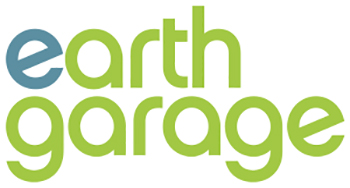1987 Buick GNX
The Grand National was a product of Buick’s NASCAR Grand Nationals success in 1981 and 1982. In its first model year, the 1982 Regal Grand National had a naturally-aspirated V6 engine (though Buick made 35 Grand Nationals with the turbocharged V6 setup.) It wasn’t until 1984 when Buick installed a 3.8-liter turbocharged V6 that things got really interesting. With 235 hp and 330 pound-feet of torque, the 1986 Buick Grand National blew down the quarter-mile in under 14 seconds. It was quicker and faster than the Chevrolet Camaro and Pontiac Firebird.
But, in 1987, things got even more interesting. The Grand National was set to retire so, for a swan song, GM sent 547 of them to McLaren to spice things up, and the Grand National Experimental (GNX) was born. McLaren fitted bigger turbos, a new ECU and better suspension components. All of these improvements made for 276 hp and 360 lb-ft of torque and yielded a car quicker than a Ferrari F40, Ferrari’s flagship supercar of the day.
1967 Chevrolet Corvette L88
The 1967 Sting Ray was the last year of Corvette’s second generation and Chevrolet decided to finish off the series with the ultimate motor. Zora Arkus-Duntov, director of GM’s performance division, developed a highly modified version of Chevy’s 427-cubic-inch V-8 and gave in the L88 option. Although the factory-claimed horsepower was 435, real power output was likely somewhere between 540 and 580, enough to allow a “stock” L88 to run the quarter-mile in the mid-to-high 11-second range. The L88 could be ordered only with certain options such as a performance suspension, Positraction differential, and upgraded brakes, while other features such as a radio and A/C were not available. The L88 stayed in production until 1969 with a total of just 216 produced.
1964 Ford Fairlane Thunderbolt
Back in the 1960s, winning drag races sold cars. The expression was “win on Sunday, sell on Monday” in the retail car business. In order to tally some wins, in 1964, Ford built the Fairlane Thunderbolt. The Thunderbolt was a limited production, factory experimental, drag race only automobile. Just 100 units were produced; forty-nine were 4-speed and fifty-one were automatic. The Thunderbolt’s combination of light weight, intermediate-sized body with 427 cu in V-8 powertrain along with dual Holley four-barrel carburetors secured the 1964 NHRA Super Stock title and proved to be a strong competitor at NASCAR.
1969 Ford Mustang Boss 429
The original Mustangs when released in 1965 were a massive hit (681,551 sold in the first year) but could only be optioned with an inline-6 engine (170 or 200 cu in) or small block V8 (260 or 289 cu in.) Just a few years later, that all changed. In 1969, Ford released the Boss 429 Mustang. Truth be told, the Boss 429 had a mission: Ford wanted to develop an engine that could compete with Chrysler’s famed 426 Hemi in NASCAR’s Sprint Cup Series.
The Boss 429 engine was derived from the Ford 385 engine. It used four-bolt mains, a forged steel crank and forged steel connecting rods. The engine featured aluminum cylinder heads, with a modified Hemi type combustion chamber which Ford called “crescent cylinder heads”. These heads were “dry-deck.” Our tech consultant at www.thompsonhyundai.com explained that method of attachment meant that no head gaskets were used. Each cylinder, oil passage and water passage had an individual “O” ring style seal to seal it tight. The Boss 429 engine used a single Holley four-barrel carburetor rated at 735 CFM mounted on an high-flow aluminum intake manifold.
In total there were 1,358 original Boss 429s made. Today, these cars are highly sought after and have fetched up to $420,000.00 at auction.
Earthgarage – Greener Car. Fatter Wallet.
